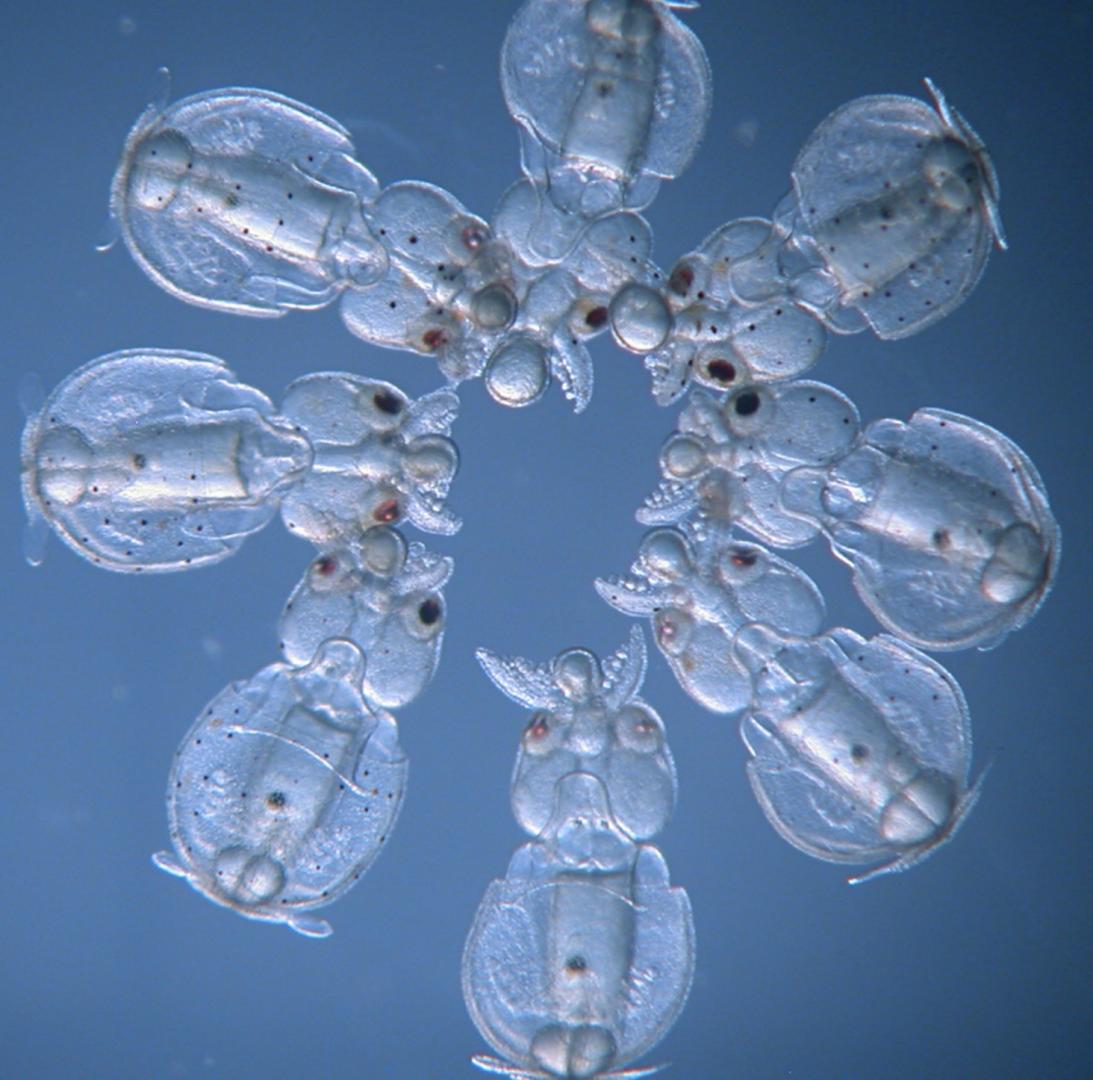Professor of Biology Karen Crawford Research Photograph Named One of the Top 10 Scientific Images of 2020 by Nature Michael Bruckler December 18, 2020 - 10:47 am
December 18, 2020

A research photograph taken by Professor of Biology Karen Crawford has been selected by Nature as one of the top 10 scientific images of 2020.
According to Nature, “2020 has been a year like no other. The COVID-19 pandemic pushed science to the forefront and dominated lives. But the year also produced fresh images unrelated to the virus. From wafer-thin solar cells to gene-edited squid, here are the striking shots from science that caught the eye of Nature’s news and art team.”
The photograph was taken during summer 2019 while Crawford was a Whitman Fellow on a team at Marine Biological Laboratory in Woods Hole, Massachusetts. She was first author of a milestone study reported in the July 30, 2020, issue of Current Biology.
The team at MBL, led by MBL Senior Scientist Joshua Rosenthal and Crawford, achieved the first gene knockout in a cephalopod using the squid Doryteuthis pealeii, an exceptionally important research organism in biology for nearly a century.
The team used CRISPR-Cas9 genome editing to knock out a pigmentation gene in squid embryos, which eliminated pigmentation in the eye and in skin cells (chromatophores) with high efficiency.
The ability to knock out a gene to test its function is an important step in developing cephalopods as genetically tractable organisms for biological research, augmenting the handful of species that currently dominate genetic studies, such as fruit flies, zebrafish, and mice.
It is also a necessary step toward having the capacity to knock in genes that facilitate research, such as genes that encode fluorescent proteins that can be imaged to track neural activity or other dynamic processes.
The MBL Cephalopod Program’s next goal is to transfer the new knockout technology to a smaller cephalopod species, Euprymna berryi (the hummingbird bobtail squid), which is relatively easy to culture to make genetic strains.
The Nature feature on “best science images of the year” is available online:
https://www.nature.com/immersive/d41586-020-03436-5/index.html?utm_source=Nature+Briefing&utm_campaign=ad624b02ae-briefing-dy-20201214&utm_medium=email&utm_term=0_c9dfd39373-ad624b02ae-44341669
According to Crawford, “Ironically, while the editors chose to call the image Invisible Ink because the embryos are more transparent, the black ink in cephalopods is actually melanin based and therefore quite visible within the central ink sac (black dot) of each embryo.”
December 18, 2020

A research photograph taken by Professor of Biology Karen Crawford has been selected by Nature as one of the top 10 scientific images of 2020.
According to Nature, “2020 has been a year like no other. The COVID-19 pandemic pushed science to the forefront and dominated lives. But the year also produced fresh images unrelated to the virus. From wafer-thin solar cells to gene-edited squid, here are the striking shots from science that caught the eye of Nature’s news and art team.”
The photograph was taken during summer 2019 while Crawford was a Whitman Fellow on a team at Marine Biological Laboratory in Woods Hole, Massachusetts. She was first author of a milestone study reported in the July 30, 2020, issue of Current Biology.
The team at MBL, led by MBL Senior Scientist Joshua Rosenthal and Crawford, achieved the first gene knockout in a cephalopod using the squid Doryteuthis pealeii, an exceptionally important research organism in biology for nearly a century.
The team used CRISPR-Cas9 genome editing to knock out a pigmentation gene in squid embryos, which eliminated pigmentation in the eye and in skin cells (chromatophores) with high efficiency.
The ability to knock out a gene to test its function is an important step in developing cephalopods as genetically tractable organisms for biological research, augmenting the handful of species that currently dominate genetic studies, such as fruit flies, zebrafish, and mice.
It is also a necessary step toward having the capacity to knock in genes that facilitate research, such as genes that encode fluorescent proteins that can be imaged to track neural activity or other dynamic processes.
The MBL Cephalopod Program’s next goal is to transfer the new knockout technology to a smaller cephalopod species, Euprymna berryi (the hummingbird bobtail squid), which is relatively easy to culture to make genetic strains.
The Nature feature on “best science images of the year” is available online:
https://www.nature.com/immersive/d41586-020-03436-5/index.html?utm_source=Nature+Briefing&utm_campaign=ad624b02ae-briefing-dy-20201214&utm_medium=email&utm_term=0_c9dfd39373-ad624b02ae-44341669
According to Crawford, “Ironically, while the editors chose to call the image Invisible Ink because the embryos are more transparent, the black ink in cephalopods is actually melanin based and therefore quite visible within the central ink sac (black dot) of each embryo.”
